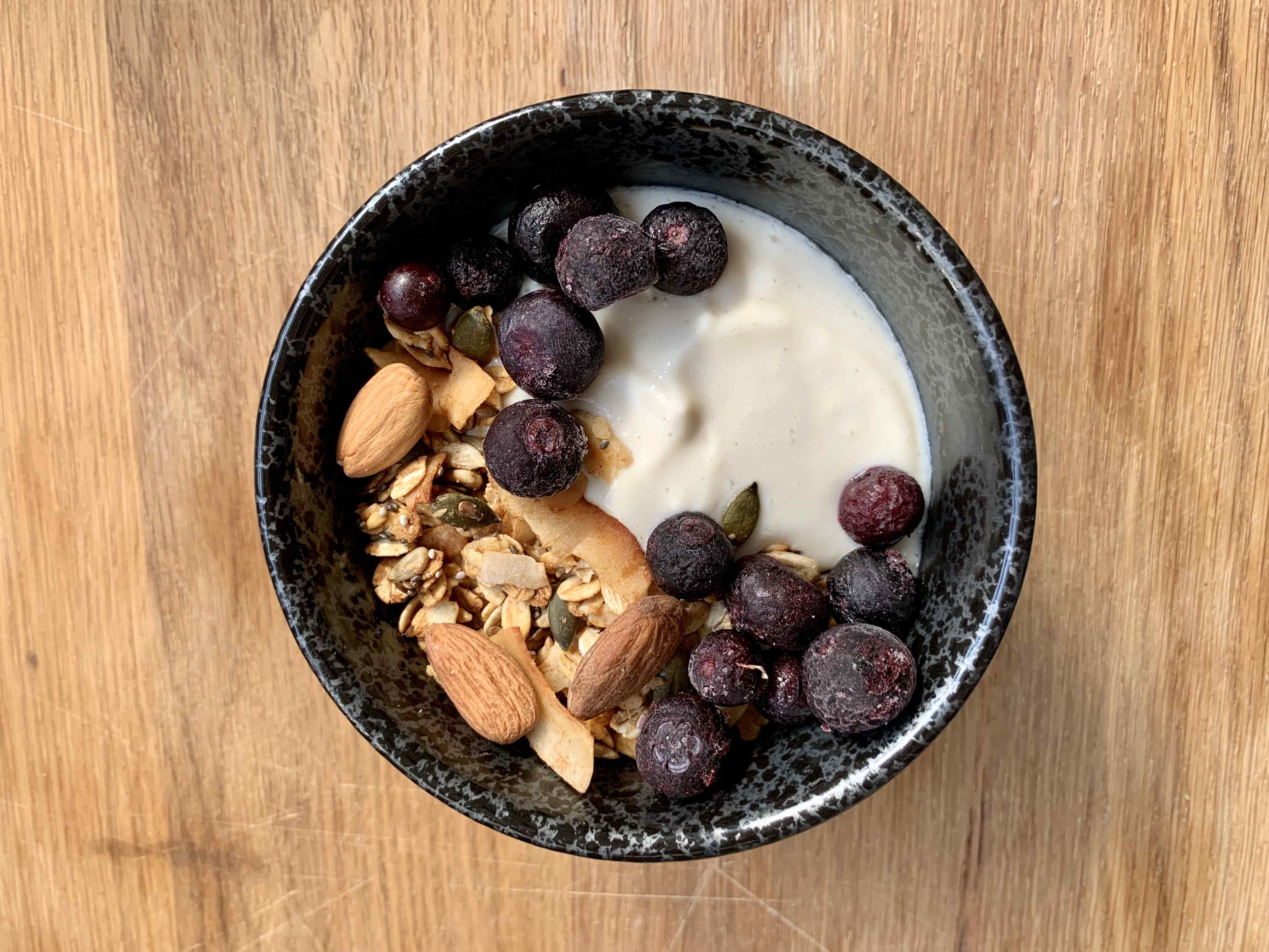Probiotic homemade yoghurt recipe
 With so many options available in both dairy and plant-based yoghurts, is there still a need to consider making your own yoghurt at home? There might well be! First and foremost because of the additives in many yoghurts that enhance flavour and shelf life. Then also because of what’s NOT in it: the live probiotics that are so important for your gut health.
With so many options available in both dairy and plant-based yoghurts, is there still a need to consider making your own yoghurt at home? There might well be! First and foremost because of the additives in many yoghurts that enhance flavour and shelf life. Then also because of what’s NOT in it: the live probiotics that are so important for your gut health.
While yoghurt has a reputation of being a healthy food choice, it really depends on which yoghurt whether or not it is actually part of a healthy diet, or that it’s a treat that should be consumed in moderation. First and foremost: check for added sugars. Many brands contain added sugar for flavour. Secondly, all yoghurts start the fermenting process with live cultures, however many yoghurts are then heat-treated which kills the bacteria that are healthy for your gut. The heat treatment improves the shelf life, but it removes an important health benefit from yoghurt. You want to have yoghurt that still contains live cultures as these are associated with a healthy digestive system.
When making your own yoghurt, and using your milk of choice you’re in control of what your adding and removing to make it a yoghurt that you love and is good for you. Yoghurt doesn’t need extra sugar to make it tasty. The way in which you serve the yoghurt makes the difference. You can add banana, berries, granola which not only add sweetness but fibre too, making it a healthy breakfast or snack.
It’s much easier than you’d think, and it will become a fun weekly activity that makes breakfast really a feast again. A good yoghurt contains just 2 ingredients: (plant) milk and cultures. That makes yoghurt a healthy ingredient for your smoothies or smoothie bowls too.
For the purest soy yoghurt, make your own soy milk. Simply follow step 1-7 of the Tofu recipe, and let the soy milk cool down to turn it into yoghurt. To make the yoghurt with your fresh soy milk, warm it up to about 43C degrees, then add the cultures. For the soy yoghurt in the picture we used fresh soy milk, and left it to ferment for 8 hours, which resulted in a creamy yoghurt. It’s quite acidic as you would expect, and you can add your own flavouring, or simply add fruit, granola and honey or maple syrup for a perfect bite.
This video show how to make the yoghurt using a sous vide water bath. A sous vide water bath makes it possible to fully control the temperature, which for making yoghurt would be 43C degrees. The milk ferments in a few hours while the bath retains the temperature. In this video raw cow milk is used (only use raw milk from a trusted source), which is heated up to 82C degrees, and then cooled down. If you’re using sterilised, pasteurised or soy milk, you only have to warm up to 43C degrees before adding the cultures.
If you don’t have a sous vide bath, you can use a cooler box and add a jar warm water to keep the temperature between 40-45C degrees.
Ingredients:
2 litre Soy or cow milk
Tiny knifepoint yoghurt cultures
Method:
- Heat up the milk to 43C degrees (for raw milk heat up to 82C and cool down back to 43C degrees)
- Add yoghurt cultures & stir
- Divide over jars
- Place in a sous vide bath or cooler box (where you retain the temperature between 40-45C degrees) for 6-8 hours
To turn this yoghurt into a thick Greek yoghurt, pour the yoghurt onto a fine mesh cheese cloth or cotton fabric that you place over a colander (place the colander over a bowl to catch the liquid that drains off). Wrap it up and strain for a few hours in the fridge. Similarly you can turn it into labneh by adding salt in the process.
To start making yoghurt at home, you can find yoghurt cultures here (this pack is sufficient for 100ltr which works out to about R14 per litre of homemade yoghurt, incl the milk that you used) and a sous vide water bath here.










Leave a comment